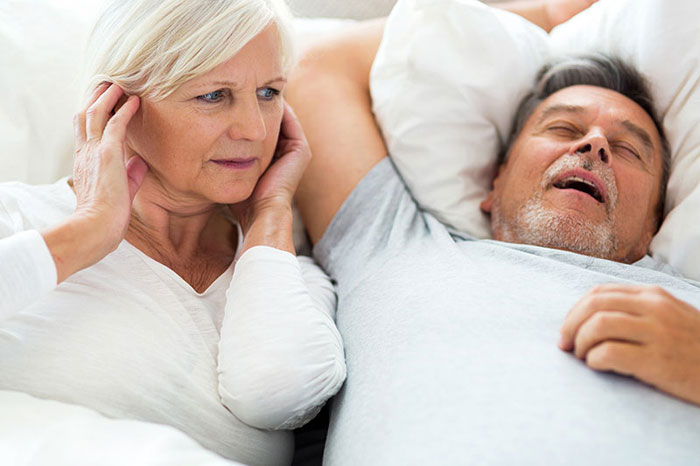What is Sleep Apnea?
 Different Forms of Sleep Apnea
Different Forms of Sleep Apnea
Sleep apnea is estimated to affect at least one in 10 people to some degree. In serious cases, symptoms of sleep apnea are similar to those of narcolepsy, causing a person to fall asleep with little or no warning.
Many cases of narcolepsy are believed to be caused by a deficiency of a chemical in the brain called hypocretin (aka orexin). Sleep apnea, however, is rooted in problems with breathing properly while sleeping, which can lead to exhaustion during the day.
OSA is the most common type of sleep apnea. The two other forms are CSA (central sleep apnea) and a combination of OSA and CSA called mixed sleep apnea (MSA).
Unlike obstructive sleep apnea, which is a physical problem, CSA is more of a communication issue when the brain temporarily fails to cue the muscles that control breathing.
Because CSA is rare compared with OSA, here we’ll focus on obstructive sleep apnea.
Obstructive Sleep Apnea
Obstructive sleep apnea typically follows loud snoring and is characterized by recurring pauses in breathing that may last a few seconds or much longer. When you’re asleep, the muscles in your throat relax, and a narrowed airway can cause snoring. If your throat closes entirely, you temporarily stop breathing. This can result in the brain – and the rest of the body – being starved of oxygen.
Resumption of breathing is prompted by the brain and is usually accompanied by a snorting or choking sound. Some people wake up briefly but others remain unaware of what has happened. With severe OSA, this pattern can be repeated multiple times a night.
The condition can affect anyone, and, because it disrupts normal sleep patterns, sufferers may experience sleepiness or even feelings of exhaustion during the day. In children, it can cause hyperactivity and problems at school.
OSA affects up to six percent of adults and two percent of children and is twice as prevalent in males. It occurs most commonly among people aged over 55. You’re at greater risk of obstructive sleep apnea if you’re a middle-aged man or a woman who’s gone through menopause.
Obstructive sleep apnea is so called because apnea means a temporary cessation of breathing, and OSA obstructs the airway of your throat while you sleep.
Causes of OSA include:
• Obesity.
• Genetics.
• Allergies.
• A small airway.
• Enlarged tonsils.
• Large tongue.
• Nasal blockage.
• Small lower jaw.
Obstructive sleep apnea can be aggravated by:
• Alcohol.
• Smoking.
• Sedatives.
Signs of Obstructive Sleep Apnea
Without treatment, obstructive sleep apnea can increase the risk of diabetes, stroke, heart attacks and – as we’ve already seen – vehicle collisions.
People with obstructive sleep apnea may not realize they have it until their attention is drawn to the problem by a family member. The most common signs of obstructive sleep apnea that may be noticed by your partner while you sleep are:
• Struggling for breath.
• Snoring.
• Tossing and turning.
• Jerky body movements.
Symptoms you might notice yourself during the day include:
• Waking up unrefreshed or with a headache.
• Persistent tiredness.
• Difficulty concentrating.
• Poor memory.
• Feeling depressed or irritable.
• Loss of sex drive.
• Heartburn.
OSA may also be indicated if you invariably doze off while watching TV or reading, when sitting still in a public place like a movie theatre, or when you’re a passenger in a car or while using public transport.
Oral Appliance Therapy
The American Sleep Apnea Association (ASAA) says the most widely used treatment for moderate and severe sleep apnea involves airway pressure machines with breathing masks.
However, the ASAA points out that oral appliances for sleep apnea are increasing in popularity as an effective first line of treatment. These devices are worn like a mouthguard, but while you sleep, holding the lower jaw forward to keep the airway open.
The American Academy of Sleep Medicine (AASM) has given the green light for oral appliance therapy (OAT) for patients with mild to moderate OSA and for those with severe OSA who cannot tolerate continuous positive airway pressure machines (CPAPs).
Benefits of oral appliance therapy include:
• Comfort and ease of use.
• Portability – convenient for travel.
• Ease of maintenance.
The AASM says badly-fitting oral sleep appliances can result in jaw problems or shifting of teeth and make sleep apnea worse. If you’ve been diagnosed by a doctor as having obstructive sleep apnea, and an oral appliance is appropriate, the AASM says the device should be fitted by a dentist specializing in sleep apnea problems.
Mandibular Advancement Devices
Mandibular advancement devices (MADs) are a popular form of oral sleep appliance fitted by dentists to combat sleep apnea and snoring.
Similar to a gum shield, a typical MAD comprises a custom-fitted splint on both the upper and lower teeth. These splints keep the airway free of obstruction by advancing the tongue and soft tissue of the throat while gently coaxing the lower jaw forward.
Research indicates that mandibular advancement devices hold numerous benefits over other oral sleep appliances, and most side effects diminish over time.
To use an oral appliance like a mandibular advancement device, your teeth and gums need to be healthy; otherwise, it can make the problem worse.
 1322 W. Kathleen Ave., Suite 1, Coeur d'Alene, Idaho 83815
1322 W. Kathleen Ave., Suite 1, Coeur d'Alene, Idaho 83815 208.667.7461
208.667.7461


Please login to publish a comment.
Comments (0)